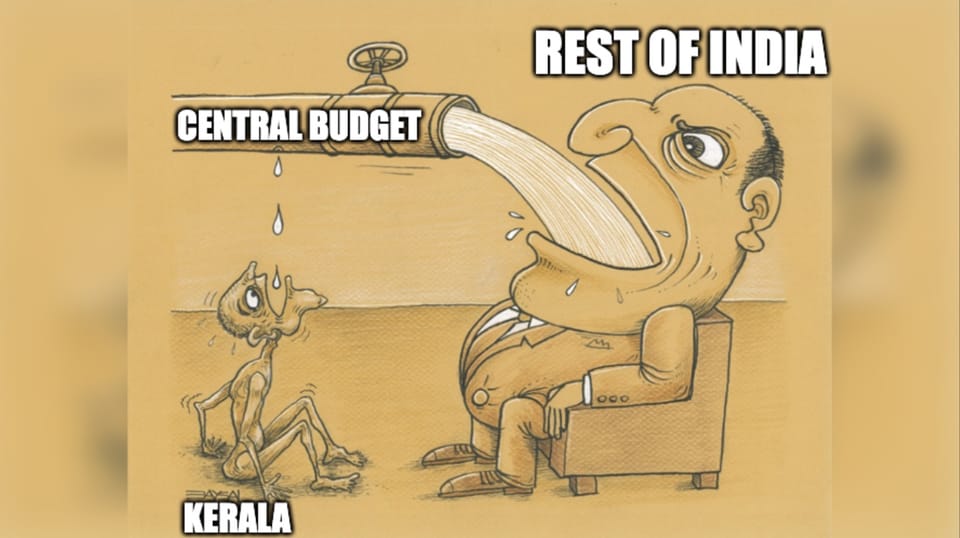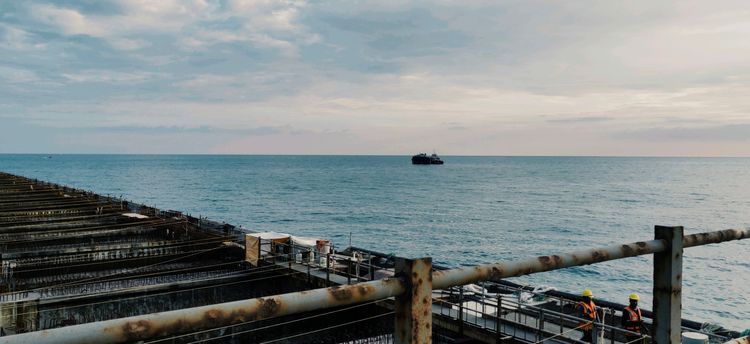India's neglected tail

Honourable Prime Minister,
With the utmost respect, I must voice my dissent regarding your recent announcements. As you trumpet the commencement of your government's third term with a grandiose 100-day package, we in the southern states find ourselves pondering a disquieting question: Are we truly part of the same India?
Your declaration of projects worth a staggering three lakh crore rupees (~US$ 35.82 billion) within a mere 100 days is indeed impressive. However, the allocation of these funds raises eyebrows and furrows brows in equal measure. A whopping 76,200 crores (US$ 9.1 billion) earmarked solely for the Vadhavan Port in Maharashtra, with your bold prediction of it becoming one of the world's top ten ports, seems to overshadow other crucial developments. The 49,000 crore (US$ 5.85 billion) set aside for rural road construction and upgrades, and the 50,600 crore (US$ 6.04 billion) designated for the 8th National High Speed Corridor are undoubtedly significant. Yet, one can't help but notice a glaring omission in this grand plan.
Let us, for a moment, shift our gaze southward and consider the heartfelt words of Rahul Gaur, a seasoned sailor with 17 years of naval experience. His pride in the Vizhinjam International Seaport, poised for its official inauguration in Kerala's capital, is palpable. This world-class facility stands as a resounding riposte to those who have long looked down upon India's maritime capabilities. The elation that swells within him, much like the seas surrounding Ananthapuri, speaks volumes. While landlubbers may struggle to grasp the significance, the nearly 200,000 Indian sailors traversing the globe's oceans understand all too well. They've long carried the weight of decades of humiliation, unable to give voice to their frustrations. One must ask: why have the central government and other states, despite their financial might, failed to address this issue until now?
Kerala's economic contribution is not insignificant, ranking 11th nationally with an annual gross state product (GSP) of 11.6 lakh crores (US$ 138.5 billion). This places ten other states ahead in the agricultural, industrial, and service sectors. Yet, why have none of these states managed to achieve a feat as momentous as the one Rahul Gaur speaks of? Of the 9 states and 2 Union Territories that lay claim to India's 7,517 km coastline, why has Kerala alone accomplished this? The question becomes particularly poignant when considering Gujarat, with its expansive 1,600 km coastline. How is it that Gujarat, home to Lothal – a testament to sea trade dating back to the Harappan and Indus Valley civilisations of 2400 BC – has not replicated Kerala's remarkable achievement?
Kerala's trailblazing spirit is not a recent phenomenon. While the world's first democratically elected communist government may have lost its sheen over time, it remains an indelible fact of history. None can deny that the seeds of India's celebrated Chandrayaan achievements were first sown in Kerala's capital. As prognosticators wax lyrical about the semiconductor industry's potential to catalyse India's growth, many seem to have forgotten that this sector, too, found its Indian genesis in Kerala through the visionary efforts of KPP Nambiar. Be it Universal Education, Health Index, or Human Development Index (HDI), Kerala continues to set the gold standard for India. However, it would be remiss not to acknowledge that many robust foundations laid decades ago have begun to show cracks in recent times. It's equally important to recognise the central government's role in exacerbating this erosion – a point that brings us full circle to your recent pronouncements, Honourable Prime Minister.
One can't help but wonder: does our esteemed Prime Minister, who takes such evident pride in Maharashtra's Vadhavan Port project, harbour similar sentiments towards Trivandrum Port? As someone who helmed Gujarat for 13 years as Chief Minister, you undoubtedly appreciate the transformative potential of ports and their associated infrastructure. Yet, the people of India are left to speculate whether your conspicuous silence regarding India's first transshipment port – and the absence of any proposals for its further development – stems from its location in Kerala.
The Vizhinjam project, which has already seen an investment of approximately 7,500 crores, has received a paltry 818 crores from the centre – a sum that, to the best of our knowledge, remains unreleased. In stark contrast, a lion's share of the 76,200 crore allocated to the Vadhavan project is being shouldered by the central agency, Jawaharlal Nehru Port. One must ask: does the centre not have an obligation to provide substantial support to the Vizhinjam project? Has it escaped your notice, Prime Minister, that this vital project teeters on the brink of crisis for want of a mere 300 metres of connectivity, even as nearly 1 lakh crore has been earmarked for national highways and rural roads? Why does the 10 km rail connectivity for Trivandrum port remain in limbo, while your notably enthusiastic Minister of Railways seems preoccupied with constructing 8 new rail lines elsewhere? Is Trivandrum, despite being one of India's fastest-growing cities, being overlooked in the allocation of funds for metro projects simply because it happens to be Kerala's capital?
Let us now turn our attention to the future contribution of Trivandrum port to our nation – a contribution that the Centre seems determined to ignore. India's total exports for 2023-24 stood at a commendable $776.68 billion. However, imports remained stubbornly high at $854.80 billion, resulting in a worrying shortfall of $78.12 billion. This trade imbalance persists despite the concerted efforts of all our existing systems. To tip the scales in our favour, we must venture down untrodden paths. All indicators suggest that Trivandrum Port could be the game-changer we so desperately need.
Rahul Gaur, a seafarer aboard the MSC Claude Girardet, offers a global perspective on this matter. He asserts that the advent of giant ships calling at Trivandrum Port will usher in a new era for India's import and export landscape. This development promises to benefit India's export-import community and industrialists in two significant ways. Firstly, the foreign exchange previously spent on transshipment will now remain within our borders. Moreover, there has been a substantial reduction in associated costs. Where a vessel of around 30,000 gross tonnage would have been charged USD 27,000 for docking at Colombo port, Trivandrum Adani Port has slashed this rate to a mere USD 10,000. One must consider: will shipping companies pass on these savings to Exim companies? Even more compelling is the advantage of getting export products to the global market more swiftly. While India's logistics costs currently hover at nearly double international standards, there's reason for optimism. Nitin Gadkari, the Minister for Road Transport and Highways, confidently predicts that within five years, our logistic costs will be in single digits. Indeed, according to the National Council of Applied Economics and Research, rates have already dipped to 7.8 - 8.9 percent. Trivandrum Port stands poised to drive these rates even lower. The crux of the matter – and the source of our grievance – is that the central government continues to overlook Trivandrum Port and the city that could play such a pivotal role in India's economic resurgence.
The persistent neglect of South Indian states in national income sharing is a long-standing issue. It's akin to penalising a star pupil for outperforming their peers. The Chief Ministers of these states frequently lament bearing the brunt of the BIMARU states' backwardness – and not without cause. To be clear, the argument is not that we should disregard less developed states. However, is it not counterproductive to ignore the states that consistently outperform? Does this not impede the growth of the entire nation? According to the latest report from the Prime Minister's Economic Advisory Council, South Indian states have actually lagged behind other states in terms of GDP and per capita income during the post-liberalisation period. The paper "Relative Economic Performance of Indian States 1960-61 to 2023-24", authored by committee members Sanjeev Sanyal and Aakanksha Arora, noted that maritime states generally outperformed others, with the notable exception of West Bengal. Perhaps the most striking revelation in this report is that Southern states have significantly outpaced others since economic liberalisation in 1991, with Karnataka, Andhra Pradesh, Telangana, Kerala, and Tamil Nadu collectively accounting for approximately 30% of India's GDP in 2023-24.
The rise of India from the West is not merely a pipedream but a reality on the cusp of fruition. India's emancipation will be realised through the aforementioned states in the south-west. The fertile soil and innovative minds are primed for this transformation. With the exception of Kerala, competing states and their Chief Ministers are joining forces to multiply domestic production manifold. However, it falls to the central government to provide the necessary physical infrastructure. One must question whether the Centre gives due consideration to states that contribute 30% of GDP and have the potential to contribute even more. A fair and equitable allocation of national resources by Niti Aayog would yield dividends for the entire country. Infrastructure development not only creates immediate employment opportunities but also enhances the economy in the long term. Countries like China and Singapore have demonstrated how prioritising infrastructure can pave the way to prosperity. The migration from North to South serves as irrefutable evidence that such infrastructure development will channel money to other states, fostering widespread prosperity. States like Rajasthan, Bihar, and Odisha may struggle to replicate the conducive environment that Bangalore and Chennai have cultivated, regardless of financial investment. Yet, the growth of these southern cities has been fuelled by the influx of workers from these northern states. Thus, the Centre would be justified in investing more heavily in the southern states. It is regrettable that this vision was not reflected in the Prime Minister's 100-day programmes.
Honourable Prime Minister, I implore you to reconsider your approach to regional development. The path to a truly prosperous India lies not in favouring one region over another, but in recognising and nurturing the unique strengths of each state. Only through such balanced and thoughtful development can we hope to realise the full potential of our great nation.
This article © 2024 by Motherport News is licensed under CC BY 4.0
